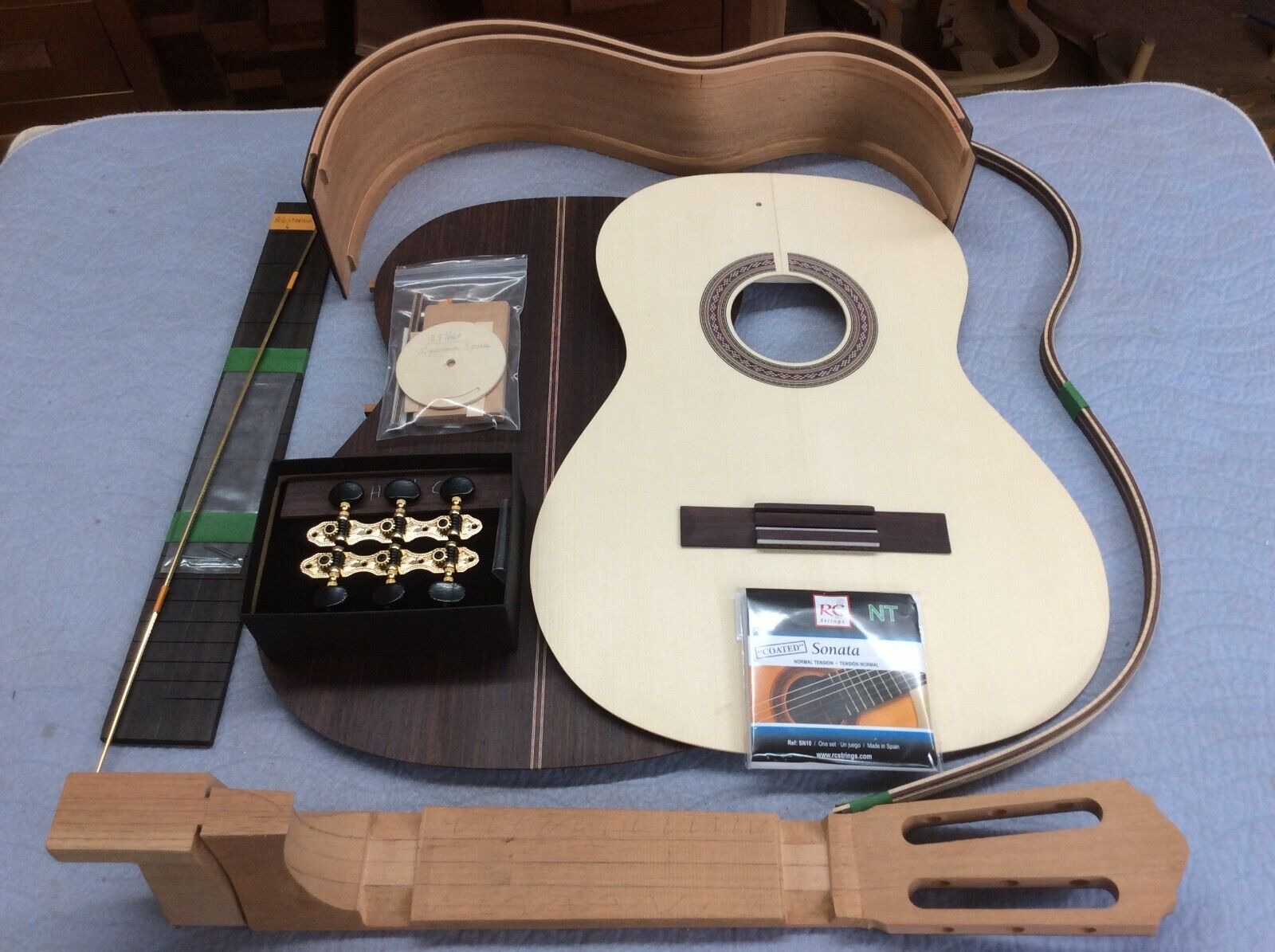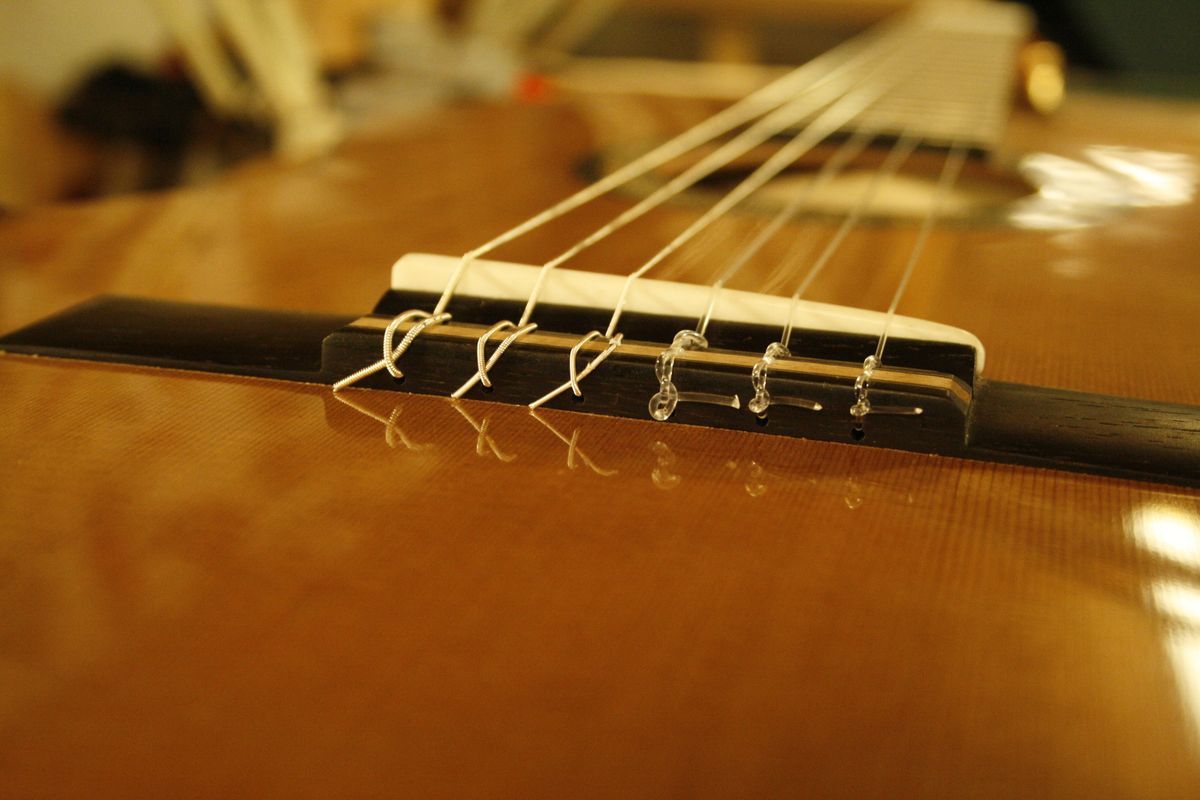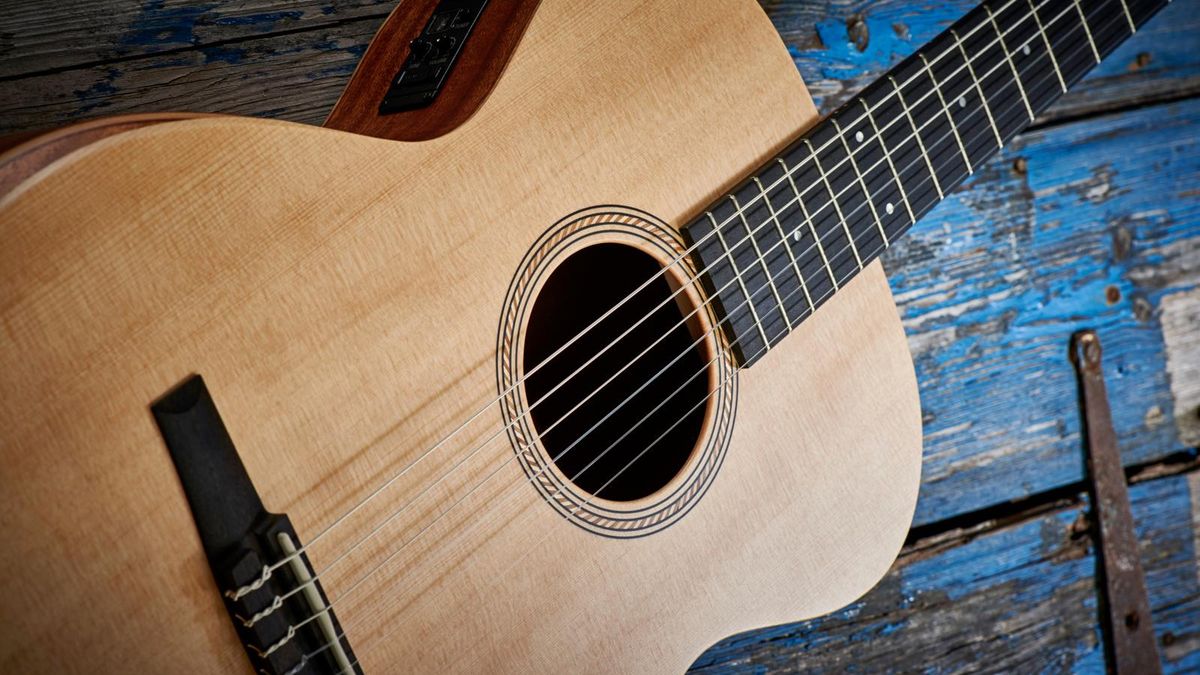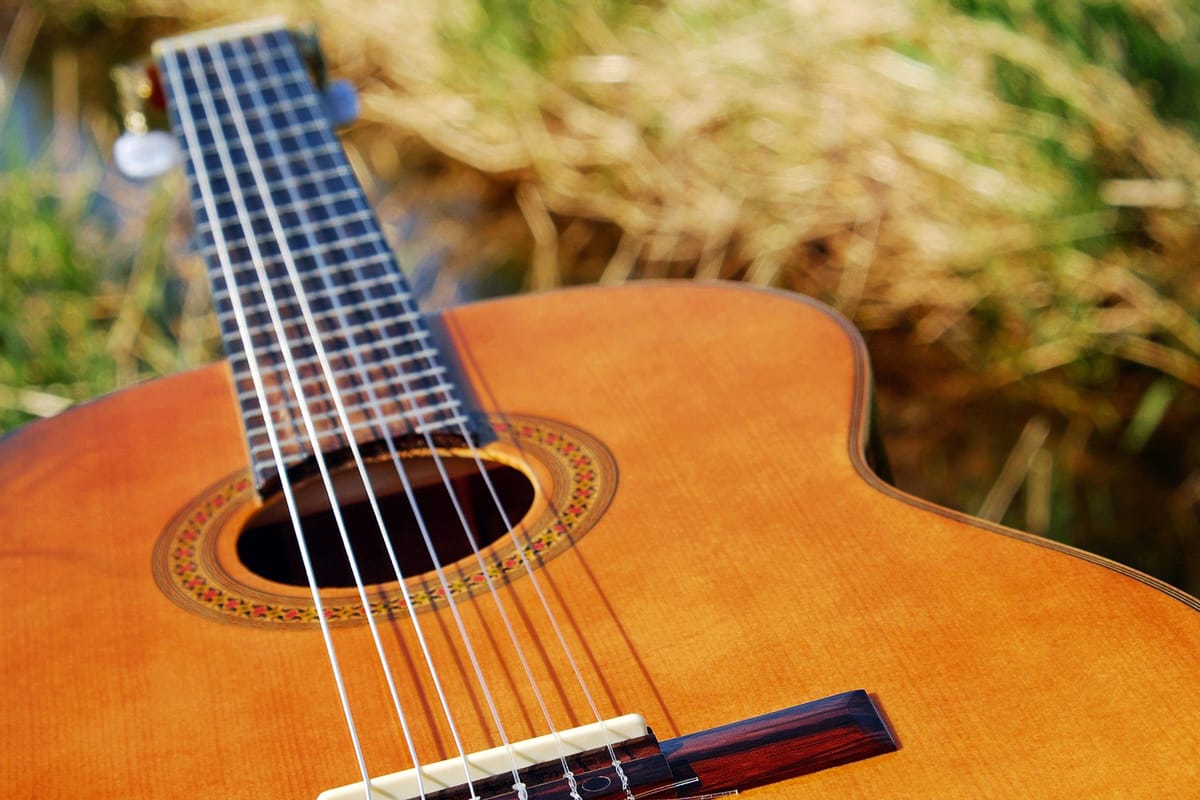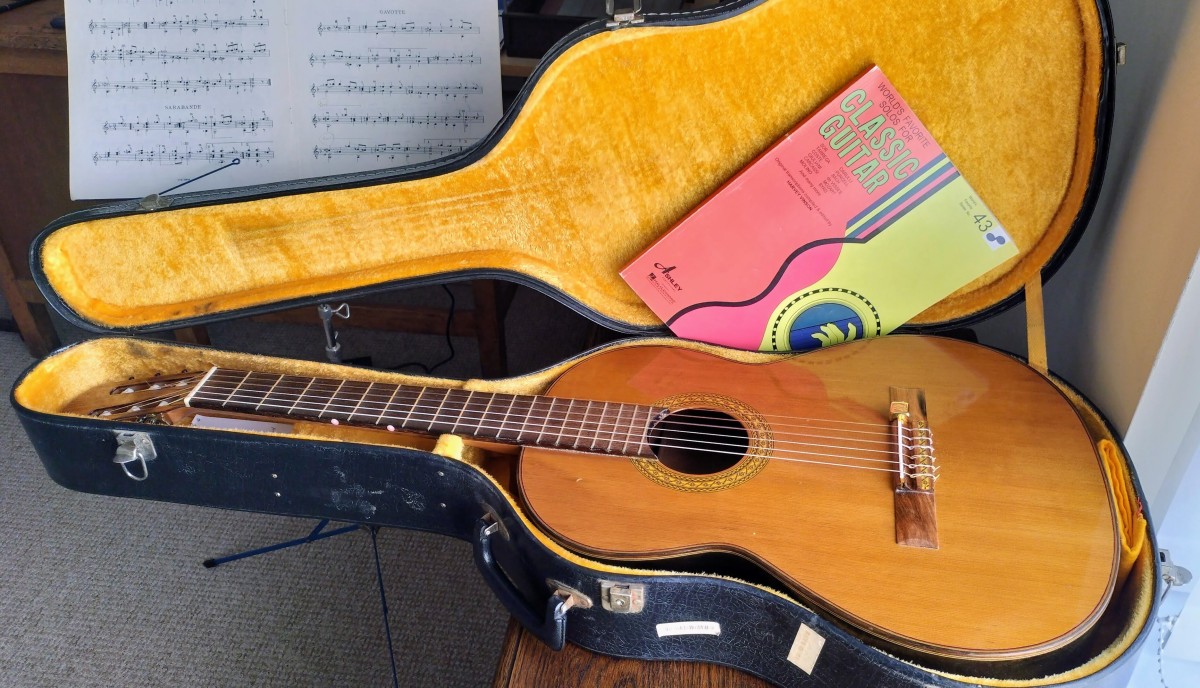

Classical
How To Clean Classical Guitar
Modified: February 15, 2024
Learn the best techniques and tips on how to effectively clean your classical guitar. Keep your instrument in top condition and ready for your next performance.
(Many of the links in this article redirect to a specific reviewed product. Your purchase of these products through affiliate links helps to generate commission for AudioLover.com, at no extra cost. Learn more)
Table of Contents
Introduction
The classical guitar is a beautiful and delicate instrument that requires regular maintenance to preserve its sound quality and longevity. One essential aspect of guitar care is keeping it clean. Regular cleaning not only enhances the guitar’s appearance but also prevents the buildup of dirt, sweat, and oils that can affect its playability and tone.
However, cleaning a classical guitar requires careful attention and gentle handling to avoid causing any damage. In this article, we will guide you through the steps to properly clean your classical guitar. Whether you are a beginner or an experienced player, following these steps will help you maintain your instrument in excellent condition.
Before we dive into the cleaning process, it is important to note that the materials and techniques described here are specifically for classical guitars. Electric or steel-string acoustic guitars may require different cleaning methods, so be sure to consult the manufacturer’s guidelines for those instruments.
Regular cleaning not only removes dirt, but it also allows you to inspect the guitar for any signs of wear or damage. By taking good care of your classical guitar, you can ensure that it will continue to produce beautiful melodies for years to come. So, let’s get started with the necessary materials you will need for the cleaning process.
Step 1: Gather the necessary materials
Before you begin cleaning your classical guitar, it’s essential to gather all the necessary materials. Having everything ready beforehand will make the cleaning process smoother and more efficient. Here’s a list of the items you will need:
- Microfiber cloth: A soft microfiber cloth is ideal for cleaning the guitar without scratching its surface. Avoid using regular household towels or rags, as they may contain rough fibers.
- Guitar polish: Choose a high-quality guitar polish that is suitable for the type of finish on your classical guitar. Ensure that the polish does not contain any abrasive ingredients that could damage the guitar’s surface.
- Guitar cleaner: A specialized guitar cleaner can help remove stubborn dirt and grime. Look for a cleaner that is safe for use on the guitar’s finish and won’t strip away any protective coatings.
- Lemon oil: Lemon oil is commonly used to condition and clean the fretboard. It helps to remove dirt, moisturize the wood, and enhance its natural appearance.
- Fretboard cleaner: If your fretboard has accumulated a significant amount of dirt or built-up grime, a fretboard cleaner can help to restore its cleanliness. Make sure to choose a cleaner that is suitable for your guitar’s fretboard material.
Once you have gathered these materials, you are ready to move on to the next step: preparing your classical guitar for cleaning. It’s important to take the necessary precautions to ensure that your guitar remains safe throughout the cleaning process.
Step 2: Preparing the guitar for cleaning
Before you start cleaning your classical guitar, it’s crucial to take the necessary precautions to protect it from any accidental damage. Follow these steps to properly prepare your guitar:
- Find a clean and stable surface: Choose a flat surface where you can lay your guitar down safely. Use a soft cloth or a guitar stand to support the instrument securely.
- Loosen the strings: To make cleaning easier, loosen the tension of the strings by turning the tuning pegs counterclockwise. This will prevent any strain on the guitar’s neck while you clean it.
- Remove dust and debris: Use a soft-bristled brush or a clean cloth to remove any loose dust or debris from the guitar’s body, fretboard, and strings. Gently brush or wipe in the direction of the grain to avoid scratching the surface.
By preparing the guitar properly, you minimize the risk of scratches or accidental damage that can occur during the cleaning process. Once you have completed these steps, you are now ready to move on to the next stage: cleaning the body of your classical guitar.
Step 3: Cleaning the body of the guitar
The body of your classical guitar is the most visible part and requires careful cleaning to maintain its appearance. Follow these steps to clean the body of your guitar:
- Apply guitar cleaner: Spray a small amount of guitar cleaner onto a microfiber cloth. Make sure to read the product instructions for the recommended amount to use.
- Wipe the body: Gently wipe the guitar’s body in a circular motion, working your way from top to bottom. Be cautious around the soundhole, bridge, and any other delicate areas. Avoid excessive pressure to prevent any potential damage.
- Remove stubborn grime: If there are any stubborn dirt or fingerprint marks, apply a bit more pressure while wiping. Ensure that you are using a soft cloth or a specialized guitar cleaner to avoid scratching the guitar’s finish.
- Dry the body: After cleaning, use a clean and dry microfiber cloth to remove any excess moisture from the guitar’s body. This step helps to prevent water damage and streaks on the finish.
Remember to take your time and be gentle while cleaning the body of your classical guitar. By following these steps, you will maintain the guitar’s appearance and protect its finish. Now, let’s move on to the next step: cleaning the fretboard.
Step 4: Cleaning the fretboard
The fretboard is an essential part of your classical guitar that requires regular cleaning to keep it in optimal condition. Follow these steps to clean the fretboard:
- Apply lemon oil: Apply a small amount of lemon oil onto a clean cloth or directly onto the fretboard. Spread the oil evenly across the fretboard, focusing on the areas with accumulated dirt or grime.
- Gently scrub the fretboard: Use a soft cloth or a fretboard cleaning tool to gently scrub the fretboard, paying extra attention to the areas around the frets. This will help remove dirt, sweat, and excess oil.
- Remove excess oil: Use a dry cloth to wipe away any excess lemon oil from the fretboard. This step is essential to prevent the buildup of oil and maintain the fretboard’s playability.
- Condition the fretboard: If your fretboard is made of natural wood, you can further condition it by applying a fretboard conditioner or a small amount of lemon oil. This step helps to moisturize the wood and preserve its natural beauty.
It’s important to note that not all fretboards are made of the same materials. Some classical guitars have fretboards made of synthetic materials like Rosewood or Ebony, while others may have composite materials. Check your guitar’s manufacturer guidelines to ensure that you are using the appropriate cleaning products for your specific fretboard material.
By following these steps, you can keep your fretboard clean and well-maintained, ensuring optimal playability and longevity for your classical guitar. Now, let’s move on to the next step: cleaning the strings.
Step 5: Cleaning the strings
The strings of your classical guitar can accumulate dirt, sweat, and oils from regular playing. Cleaning the strings not only improves their lifespan but also enhances the overall tone and playability of the instrument. Here’s how to clean the strings effectively:
- Prepare a clean cloth: Take a clean cloth or a microfiber cloth and fold it in half. Ensure that the cloth is lint-free to avoid leaving residue on the strings.
- Gently wipe each string: Starting from the top string (the one closest to the ceiling) and working your way down, hold the cloth firmly against each string. Move your hand along the entire length of each string, applying gentle pressure to remove any dirt or grime.
- Clean the fretted area: Pay extra attention to the areas of the strings where your fingers make contact, known as the fretted area. This is where most of the dirt and oils accumulate. Wipe these areas thoroughly to remove any residue.
- Use string cleaner: If your strings are particularly dirty or have stubborn grime, you can apply a specialized string cleaner. Follow the product instructions for the appropriate amount to use and gently wipe the strings with a clean cloth after applying the cleaner.
- Dry the strings: After cleaning, use a dry part of the cloth to wipe away any excess moisture or cleaning product from the strings. This step helps to prevent corrosion and retains the strings’ original tone.
Regularly cleaning your guitar strings will not only prolong their lifespan but also enhance the overall sound quality and playability of your classical guitar. Now that we have cleaned the strings, let’s move on to the next step: polishing the guitar.
Step 6: Polishing the guitar
Polishing your classical guitar not only adds a beautiful shine to its appearance but also provides an extra layer of protection for the finish. Follow these steps to effectively polish your guitar:
- Select a suitable guitar polish: Choose a high-quality guitar polish that is specifically formulated for the type of finish on your classical guitar. Make sure to avoid polishes that contain abrasive ingredients that can damage the guitar’s surface.
- Apply a small amount of polish: Take a small amount of guitar polish on a clean, soft cloth. Apply the polish onto the cloth, making sure to distribute it evenly.
- Gently polish the guitar: With the cloth, gently rub the polish onto the guitar’s body using smooth, circular motions. Work on small sections at a time, focusing on areas that may have fingerprints, smudges, or light scratches.
- Avoid excessive pressure: Keep in mind to apply gentle pressure while polishing the guitar. Excessive pressure can potentially cause damage to the finish or create swirl marks.
- Buff the guitar: After applying the polish, use a separate clean cloth to buff the guitar’s body. This will help remove any remaining polish residue and create a stunning shine.
By following these steps, you can effectively polish your classical guitar and give it a fresh, glossy look. However, it’s essential to remember that over-polishing the guitar can gradually wear down the finish. Therefore, moderation is key when it comes to polishing. Let’s move on to the final step: maintaining the guitar’s cleanliness.
Step 7: Maintaining the guitar’s cleanliness
Once you have cleaned and polished your classical guitar, it’s important to maintain its cleanliness to ensure its longevity and optimal performance. Here are some tips for maintaining your guitar’s cleanliness:
- Wipe down the guitar after playing: After each playing session, take a soft cloth and gently wipe down the guitar’s body, fretboard, and strings. This will remove any sweat or oils that may have accumulated during playing.
- Avoid excessive humidity and temperature changes: Extreme humidity and sudden temperature fluctuations can damage the guitar’s wood and finish. Keep your guitar in a controlled environment with moderate humidity and consistent temperature.
- Keep the guitar in a case or stand: When not in use, store your guitar in a suitable case or on a secure stand. This will protect it from dust, accidental bumps, and other environmental factors that can affect its cleanliness and condition.
- Change strings regularly: Over time, guitar strings can become worn out, lose their tone, and accumulate dirt. Regularly changing your strings will not only improve the tone but also help to maintain a cleaner playing experience.
- Have regular maintenance check-ups: It’s beneficial to have your classical guitar professionally inspected and maintained periodically. This ensures that any potential issues or wear can be addressed promptly, prolonging the lifespan of your instrument.
By following these maintenance tips, you can keep your classical guitar clean and in optimal condition for years to come. Remember, regular care and attention will not only enhance the guitar’s performance but also preserve its beauty and value. With proper maintenance, your classical guitar will continue to bring joy and create beautiful music.
Conclusion
Cleaning your classical guitar is an essential part of maintaining its beauty, playability, and longevity. By following the steps outlined in this guide, you can ensure that your guitar remains clean, well-maintained, and ready for your next performance. Remember the key steps:
- Gather the necessary materials for cleaning
- Prepare the guitar for cleaning
- Clean the body of the guitar
- Clean the fretboard
- Clean the strings
- Polish the guitar
- Maintain the guitar’s cleanliness
Regular cleaning not only enhances the appearance of your classical guitar but also helps to prevent dirt buildup, maintain the instrument’s structural integrity, and preserve its tone. It’s important to remember to use suitable cleaning products, be gentle in your approach, and take preventative measures to avoid any accidental damage to the guitar.
Additionally, maintaining your guitar’s cleanliness through regular wiping, proper storage, and string maintenance will further contribute to its longevity and optimal performance.
With each cleaning session, take the opportunity to inspect your guitar for any signs of wear, damage, or required adjustments. If you are unsure about making repairs or adjustments yourself, consulting a professional guitar luthier is highly recommended.
By dedicating time and effort to properly clean and maintain your classical guitar, you not only extend its lifespan but also ensure that it remains a source of joy and inspiration for your musical journey. So, pick up your guitar, give it the care it deserves, and let its beautiful melodies continue to resonate for years to come.

